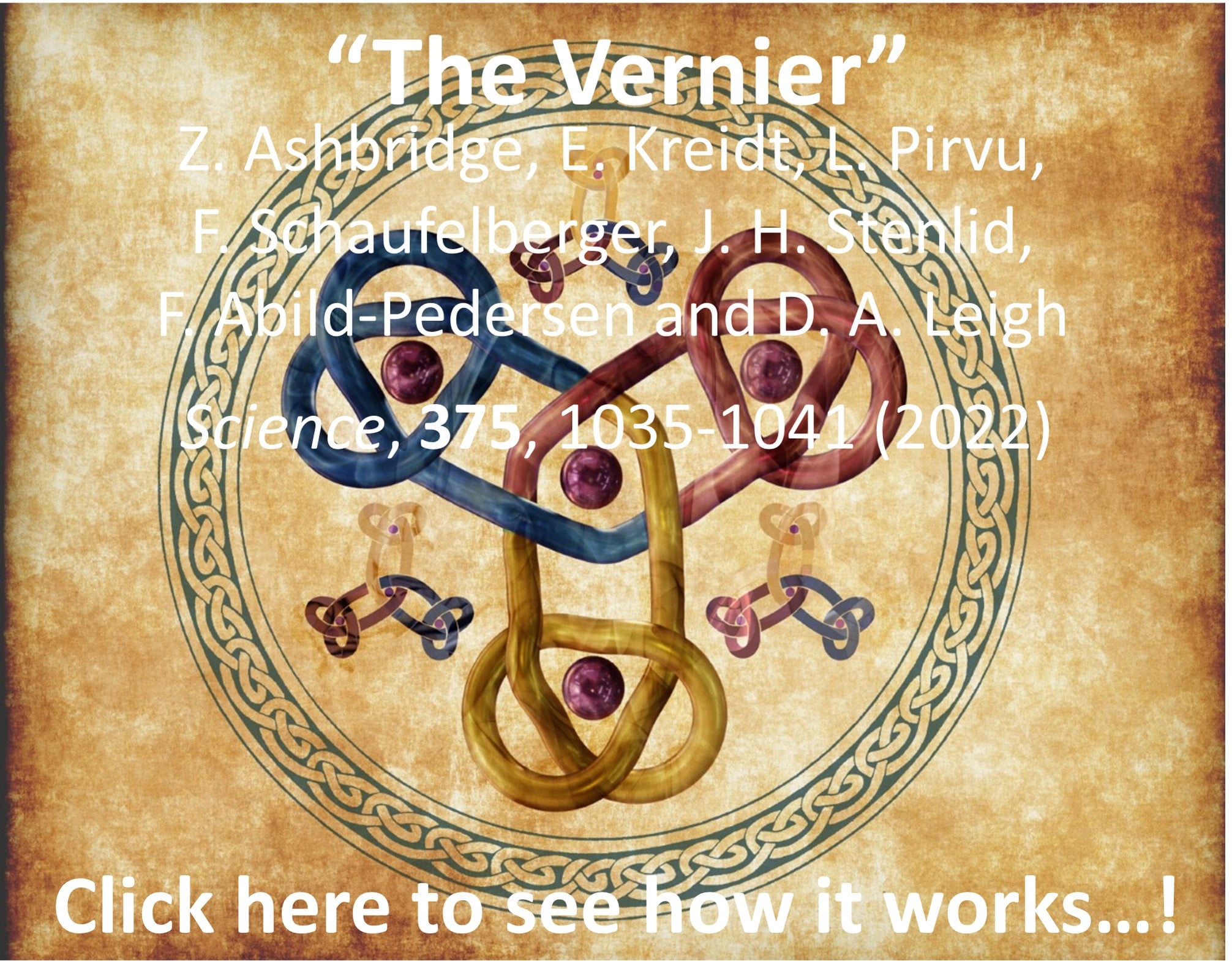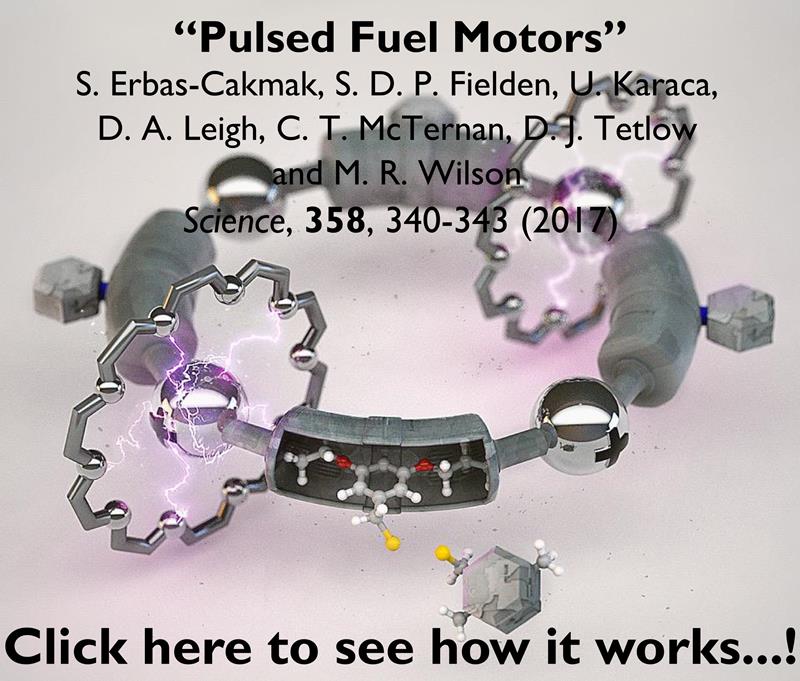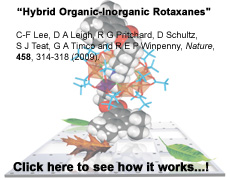
Professor David A Leigh FRS FRSE FRSC MAE
Our research
Our group explores, invents and discovers fundamental ways to control molecular-level dynamics and topology. This includes strategies and methods to synthesize interlocked molecular architectures (e.g. benzylic amide and metal ‘passive template’ catenanes, rotaxanes and molecular shuttles [1995-] and catalytic ‘active template’ synthesis
[2006-]), molecular machinery [1999-], molecular ratchet mechanisms [2003-], molecular knotting [2011-], molecular assemblers [2013-], molecular robotics [2016-] and molecular weaving [2020-]. For some highlights see HERE.
Perhaps the best way to appreciate the technological potential of controlled molecular-level motion is to recognise that nanomotors and molecular-level machines lie at the heart of every significant biological process. Over billions of years of evolution Nature has not repeatedly chosen this solution for achieving complex task performance without good reason. When we learn how to build artificial structures that can control and exploit molecular level motion, and interface their effects directly with other molecular-level substructures and the outside world, it will potentially impact on every aspect of functional molecule and materials design. An improved understanding of physics and biology will surely follow.
"What I cannot create, I do not understand"
Richard P. Feynman...................


"If you want to conquer the ocean and reach out for new continents don't tell your men to get wood and nails to build a ship, just instil in them the yearning for the expanse of the seas and distant lands"
Antoine de Saint-Exupery


























